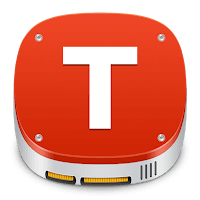 With the release of MacOS Sierra by Apple, you might have opted to update your Mac machine with that new OS especially if your gadget ecosystem revolves on the Apple-sphere of things. Upon completing the long wait of downloading the OS update and its installation, you may think at first that everything seems to work fine. Once you attached your NTFS hard drive thinking it will be a routine access to your files, you notice that it goes back to a "read-only" file explorer view even if you have Tuxera installed.
With the release of MacOS Sierra by Apple, you might have opted to update your Mac machine with that new OS especially if your gadget ecosystem revolves on the Apple-sphere of things. Upon completing the long wait of downloading the OS update and its installation, you may think at first that everything seems to work fine. Once you attached your NTFS hard drive thinking it will be a routine access to your files, you notice that it goes back to a "read-only" file explorer view even if you have Tuxera installed.I got my copy of Tuxera from purchasing Toshiba's external USB3.0 hard drives that included the said software, specifically the Canvio Connect II. The drive is a sweet deal for the price + Tuxera, especially the fact that it doesn't care whether you use your Toshiba external drive or any other brand (boooo to WD and Seagate).
What I initially did and the error I got
The usual course of action to fix Tuxera after a major MacOS software update is to just reinstall it. So I have a copy of the ".dmg" installer of Tuxera somewhere within my directories and proceeded to run it. Once the installer was mounted and clicked on the installer icon, I suddenly got this error prompt about an "Error 1 while launching Tuxera NTFS...".
At first I thought that my installer was perhaps corrupted so I accessed the installer inside my Toshiba HDD, but that was an older variant (2014 I think). When I used that version and after the installer ran smoothly, as expected it didn't work on Sierra.
I initially sought help from Tuxera (via email support) but they told me to ask Toshiba for a solution/fix. Not seeing an email support from Toshiba US, I tried their Twitter account to no avail as well. This left me no choice but to MacGyver my way out of this predicament.
The Fix
This guide of mine is to fix your Tuxera installation on your MacOS Sierra if your license came from your Toshiba HDD.
Step 1a: Go to the support page of Toshiba and download the updated Tuxera for Mac installer
The installer published in this support website will only work if you own any of the following Toshiba external hard drives:
- Canvio Connect and Connect II (HDTC7 and HDTC8 series)
- Canvio Slim and Slim II (HDTD1 and HDTD2 series)
- Canvio AeroMobile (HDTQ112XCWF1)
- Canvio AeroCast (HDTU110XKWC1)
Step 1b: Specify a different download destination for the Tuxera for Mac installer
When downloading the ".dmg" installer, don't just save it in your "Downloads" folder. I suggest you save it to your "Desktop". This is an important step as this is somewhat related to the error.
Step 2: Disable Gatekeeper
To disable Gatekeeper and "Allow apps from anywhere", follow the instructions from this website...
http://dispatchist.com/macos-sierra-gatekeeper-run-applications-anywhere/
Step 3: Run the installer
Once you have finished downloading the Tuxera installer and saved it elsewhere (your Desktop), mount and run the installer as normally as you would in previous versions.
Step 4: Keep your Toshiba external HDD at-hand
When you're already inside the installer and doing the usual clicking of the "Next" button, connect your Toshiba external HDD. This will enable the Tuxera installer to detect the hardware and activate the Toshiba-Tuxera license.
Step 5: Restart your Mac and enjoy
Yes you need to restart it so that it will properly load and use the NTFS driver
The reason behind the error
After much digging on why the said installer kept giving me that error was because of a particular feature that Apple included in the Sierra OS, which is something called the "Gatekeeper".
The purpose of the Gatekeeper was to provide another means of security to prevent users from using installers that may contain malicious workarounds/exploits. It also generates a random file path for the application to be installed wherein I'm not really sure why but it is also part of the security and application digital signing.
The Tuxera 2015.2 version was published for the El Capitan didn't have that Gatekeeper functionality. When you run the same installer in MacOS Sierra and the ".dmg" installer was saved inside the Downloads folder, this will screw-up the packaging of the Tuxera installer as it doesn't play ball with that Gatekeeper.




